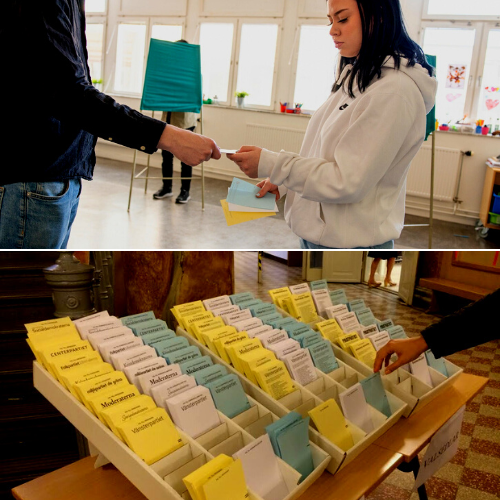In today’s episode, I will talk about something very close to my heart education, and the focus will be on primary education.
I will divide this into five sections. In the first section, I want to give you an overview of the Swedish school system. Then I want to talk a little bit about our curriculum in part three. I want to talk shortly about grades and individual education plans. I will also. Do a very short description of Swedish teacher education. And finally, I will focus on my experience. I hope you will enjoy
I have been a teacher for a very long time. I got my Swedish teacher’s degree in 1988, and I worked as a teacher for 15 years in Sweden before I moved to the US. After I moved here, I went back to college, went online, and got my American teacher degree. And even though I haven’t worked full-time as a teacher here, I have had several long-term substitute assignments, and I have been substituting for many, many years.
So I can give you a pretty fair comparison, I believe. I should say that my teaching was all done in New Jersey, and here in the US, it can look very different between different states.

The Swedish School System
So let’s begin by taking a very short look at the Swedish school system. First, we have förskolan or nursery school or preschool, provided by the municipalities for children aged one to five. I know very little about förskolan, but it is voluntary, and you pay according to your family’s income, the age of the child, and different pay grades from different municipalities.
Then we have the compulsory school in Sweden. The educational system is all mandated by the Swedish Education Act.
You have a 10-year compulsory system divided into four stages. The first stage is förskoleklassen, compared to the kindergarten year here in the US. Then we have lågstadiet, which is years one, two, and three. This can be translated to lower grades or elementary grades.
Then we have mellanstadiet, year four, five, and six, which can be translated to middle stages or middle school.
And högstadiet, at years seven, eight, and nine, this is a higher stadium or high school.
All these are free. And when I say free, I mean, totally free compared to schools here as a student, you don’t pay for your school. The school provides all materials. You don’t need to bring pencils and glue or anything like that. The school provides all the needed education on materials. They also have free school lunches, which are not little lunch packets like here; these are cooked meals.
Besides municipal schools in the compulsory system, we also have the Samiskolan. These are schools for the indigenous Sami people that work in the same way as the lågstadium, mellanstadium, and högstadium. After this, you have the secondary school system. What we call the gymnasium, which is years 10 to 12, can be compared to high school here in the US.
This is optional, but around 85% of all Swedish students go through this gymnasium assume. They have 18 regular national programs of three years of these 18 programs; six are preparatory for higher education, such as university, and 12 of the programs are vocational.
And then alongside this, both in the compulsory and the high school system, we have an independent school system, which is called friskolor or free schools. These are also free of charge and are subsidized the same way as municipal schools.
There are a few private schools where you have to pay. You can choose to go to a private school. The curriculum does not regulate them for the compulsory schools, and they can have their own pro programs. Friskolorna, the free schools, have to follow the compulsory curriculum.

Curriculum
So let’s talk about this curriculum for primary school. The curriculum has five parts, the school’s core values, submissions, overall goals, and guidelines for education. A section about the preschool class, förskolan, and a section about the holiday home, and this is something that all schools offer it is a sort of childcare before and after the school day. And then the fifth part is the course plan.
We have course plans for picture, I don’t know why they translated it to picture, but I will call it art because it’s much more than drawing, biology, English, physics, geography, home economics, history, sports, and health chemistry, mathematics, modern languages, mother, tongue, and then a couple of special mother tongue here for Finnish Yiddish, Meänkieli, and Romani, which are four of the recognized minority languages in Sweden. We have music, religious knowledge, civics handcraft, Swedish, Swedish as a second language, sign language for the hearing, and technique. The technique includes IT as well. We also have two other course plans that are not obligatory for everybody. And that is dance and Jewish studies.
Let’s take a look at English. For example, each course plan has 1. Syllabus, 2. Purpose of the subject, 3. Central content, and 4. Grading criteria. The central content section is then divided into three levels, one for grades 1-3, one for grades 4-6, and one for grades 7-9.
And if we look, as I said, for English, for grades one to three, the central content for grades one to three in English is part one communication. Subject areas are familiar to the students, everyday situations, interests, people and places, everyday life, and ways of life in different contexts and areas where English is used.
They have one section about listening and reading. You should understand clearly spoken English and simple text that is instructive, descriptive, and contact-making from different media. Also, in combination with illustrations, you should be able to listen to and read simple dialogues and conversations, movies and dramatized stories for children, songs, rhymes, poems, fairy tales, and words and phrases in the immediate environment, for example, on signs, in advertising and other simple texts.
And when it comes to speaking, writing, and conversing, you should be able to give simple presentations, messages, descriptions, and dialogues in speech and writing, make a simple call, use songs and rhymes, and dramatize.
And this is for grades one to three. Then it goes on for grades four to six and seven to nine.

Grades
And in each subject, we also have the grading criteria. So let’s talk about the grading system. Sweden has a grading system with letter grading A to F. F is you’re flunked. A C and E are the three levels described in the grading criteria. B and D are used if you are between two of the described grading levels.
When it comes to grading, we only give our students grades in grade year six and year nine,
all the other years, we do what is called an IUP, a written individual development plan, which has two parts, a judgment part and a looking forward part with plans for how we can help this student to reach the next level, what exactly do we need to do to get, go from being on the level D to a level C for example, these are written for each student. You. Plan ahead. You summarize and describe what efforts the school needs to make for the student to meet the knowledge required for the end of year six. So for most of the students’ compulsory school, they get these individual development plans. They are written once a year, and often in connection with the student and maybe even parents, where you have a discussion and write these plans together. You only get graded in year six and year nine. And as I said, the grading criteria are part of the curriculum, but it’s a little bit more complicated because;
Each municipality has the freedom to interpret the curriculum and the grading system, and each school even sits down and writes, and interprets, what this means for their individual schools. So you have your local plan, as well as the national curriculum, and you have some national testing in years three, six, and nine in Swedish, English, and math. And these are done so you can see that you are meeting the standards from the different course plans on a national level but also on a local level,.
I will talk a little bit more about the differences between Sweden and us in the last part when I go into my experiences.

Teacher Education
Let’s talk a little bit about teacher education. To become a preschool teacher, you go to the university for three and a half years. As I said, I am not very familiar with preschool teaching, but I know it’s divided into three main parts. The school in society, the student at school, and teaching and development.
Then we have compulsory teacher education. And here you have three programs for the lågstadiet, grades 1, 2, 3, for mellanstadiet, grades four, five, and six, and four years of full-time studying. This includes student teaching and all the subjects you teach for three grades. when it comes to högstadiet, grades seven, eight, and nine can vary depending on your combination of subjects; you are to choose two or three subjects you will be teaching. And there are a lot of different combinations to choose from. You choose subjects from different groups. And depending on your choice, you have between four and four and a half years of education. And that includes student teaching. I will leave a link in my show notes to the Swedish Skolverket, the national Swedish School Board if you are interested in more details about everything I have discussed.

My experience
Now let’s look at my experience, and let’s start by discussing things that are very different. First, I have taught mostly grades four, five, and six. I. Been teaching seven, eight, and nine at a special school. And that’s not special education. This was a school for troubled teenagers. When it comes to special needs, what we call special education here in the US, there are a few special needs schools. For example, if you are blind or deaf, there are a few special needs schools, but most students are integrated into the normal educational system.
So back to differences, let’s start with the very obvious. And as I mentioned before, Swedish schools supply everything a child needs for their education, writing material and books, and most schools have computer access for every student.
You get your lunch at school for free, a cooked meal. This hopefully will create better equality between students. No one has more or less access to material than any other kid because school provides the same for everybody. Another difference is most students in Sweden walk to school. Our schools generally have fewer students, which means you live within walking distance from your school. We don’t have a system similar to the yellow school buses.
Another very big difference from a teacher’s perspective is that I felt that w had more freedom as a teacher to individualize for each student since our curriculum are very much written to be interpreted, and each school and group of teacher do that work; they spend that time to formulate the curriculum, so it fits their school and their students.
Nobody told me as a teacher, what I had to do, how I should do it, and when I should do it. For example, if I realized that a large group of my students weren’t ready to move on in math, I could stop where we were and spend extra time on things they missed when it came to an understanding before we moved on. I also had a much larger freedom to individualize among students.

Another big difference is that for the lower grades lågstadiet, grades one, two, and three, usually you have the same teacher all three years. The same for grades four, five, and six, mellanstadiet; when you start in grade six, what we call high school, högstadiet, you get more specialized teachers, and you have several teachers, but for the lower grades, you have the same teacher for more than one.
This gives me, as a teacher, a couple of advantages. First, I don’t have to start each school year by getting to know each student and finding their preferred learning method, what they already know, and what knowledge we can build on. I need to do that the first year, but in years two and three, I already know my students.
Another effect of this is that I don’t need to be panicked if I feel that some students need a little bit longer with a subject; they need to spend a little bit more time on math compared to English, for example, because I know I have three years to reach the goals for grade six, so that is a big difference. Here I felt that you had to hand in your lesson plan that told exactly what you had to do each lesson of the day. And I felt that I was forced to follow that when I worked in an American school, regardless of whether the students were ready to move on. I felt that I had much greater freedom of actually being able to help each individual student in Sweden.
Let me talk a little bit about how this looked for me. When I worked at one particular school for many years, I was there for eight or nine years. We had decided at our school that we would prefer to work with age-mixed groups. So grade one, two, and three, instead of having one class in grade one, one in grade two, and one in grade three, we split them up. So each class had all three grades within the class. Since I worked in mellanstadiet, I had a mix of fourth, fifth, and sixth graders in my classroom. There were a lot of advantages to this. First, every student, at one point during these three years, would be the one that could teach other students and would feel that feeling of, I know this, I can help you with this, which is not valued as I believe it should be. To see a student be able to explain to another student how something works is something that builds confidence. And this helps them with all their subjects. Another advantage was that if you are very fast and learn things quickly, you could always move on and do things with the more advanced students if we worked in groups, for example, in one subject or another.

Another thing I liked about this system was how it helped the students individually to mature the youngest looked at the older kids and learned a lot of good habits when it came to their schoolwork from the older students; the older students took on a different kind of responsibility, especially in the beginning of each school year, when it came to helping the new students that came into the class, they took up on a greater responsibility of helping them find their way in the atmosphere of our class. This created a community within the class that I haven’t experienced anywhere else, not in Sweden, in a regular class, not in the US. This was something very specific that happened in the age mixed classroom.
Another great advantage was that we as teachers had to sit down and think, how can we make this work? How can we change the order of when we study things? Take a subject such as Geography, traditionally grade four, you studied Sweden grade five, Europe and in grade six you studied the rest of the world. When we started age-mixe our classes, it wasn’t natural to do it this way. So we, as a group of teachers, had to sit down and think, how will we teach each subject, so it still makes sense? Some subjects like geography or religious knowledge were easy. We just had to find another definition for each school year. We decided that year one was big lakes and oceans and we studied countries all around the world that had a lot of lakes or were at the coast or were islands. And we studied all kinds of subjects from all these countries, religious knowledge, geography, and we could go into physics, if they had any famous physicians, we could integrate all kinds of subjects into those headlines for each year.
It was harder for subjects like math, Swedish, and English, where you need a certain level of knowledge before moving on. So what we did was we chose to have part of our school day as individual work hours, where each student had their own study plan for these subjects. They had their own math plan written. They had their own Swedish plan written. They had their own English plan written for the year and then broke it down, so they planned themselves for the week. This week, I will do this and those plans they had to show me as a teacher, and we agreed when it was a working plan that, we could work with an acceptable plan to work.
This made it possible for me to let, for example, a student that had difficulty with math could spend more time on this individual work time on math and less time, for example, on English or Swedish. Because the individual work hours, their individual need also make it possible to individualize learning methods. For example, some students learn fastest and easiest when they read, and some need to read in silence, with no disturbance around them. Other students might learn best by being active, moving as they learn, or by doing, building, drawing, and creating this made it easier for me to individualize and help each student to learn things with a method that fits their needs the best.
I have many personal experiences from Sweden that I would love to share. And if that is something that would interest you can leave a comment on today’s episode.
To sum up. Sweden has a 10-year obligor school system, where everything is provided for you. Everything is free. School material, school lunch, writing, material, everything you need to be able to reach the national standards of our school education. I think that is the biggest difference between schools in Sweden and schools in the US that the school provides everything needed.
As a teacher, I felt that I was more trusted in that I knew how I would teach my students for the best results. Here I feel that there are too many outside factors that will tell me what to do and how to do it. I don’t feel the same trust in teachers as in Sweden.
I hope you enjoy today’s episode until next time.
As we say in Sweden
Hej Då




